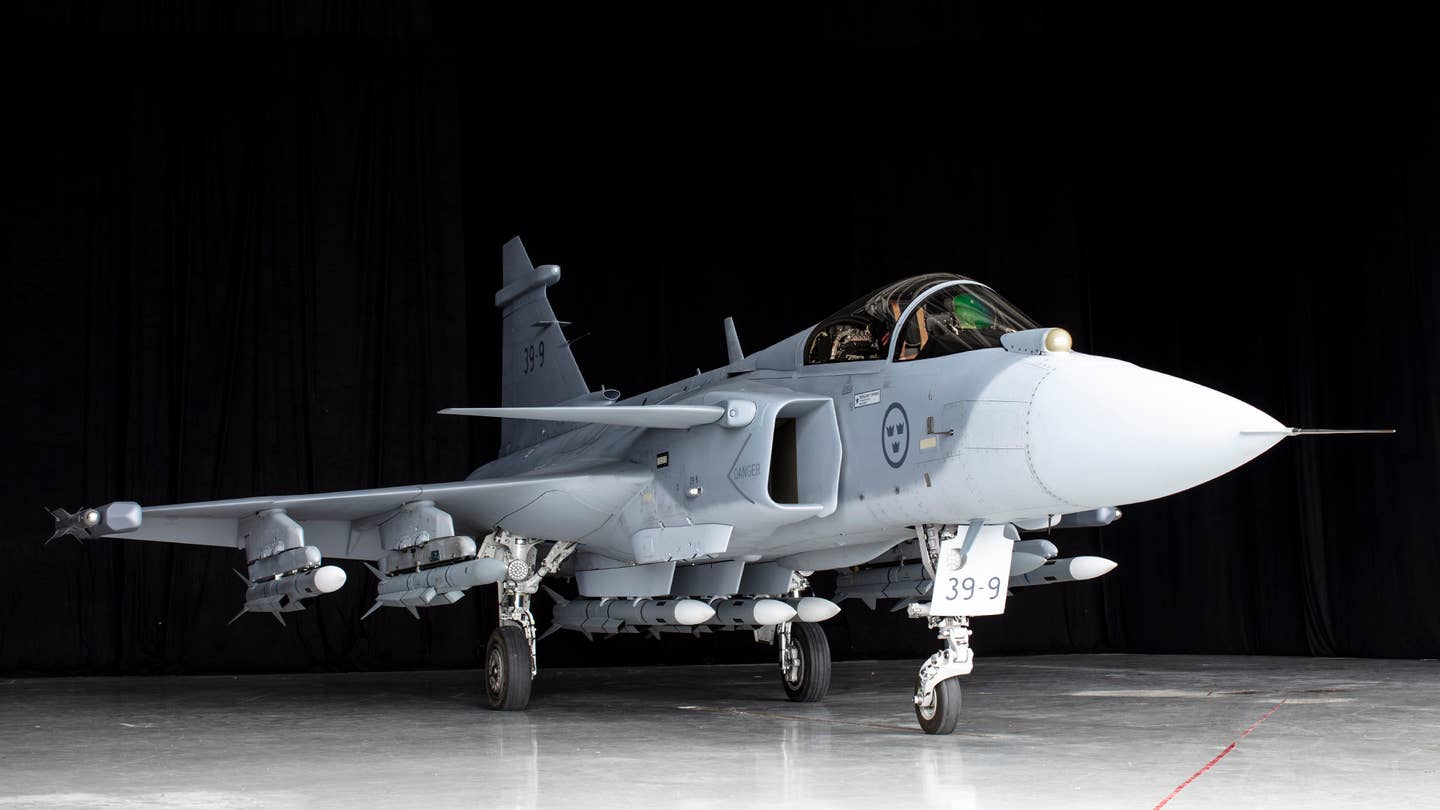Swedish aerospace and defense company Saab has delivered the first series-produced JAS 39 Gripen-E combat aircraft to the Swedish Defense Materiel Administration (FMV) for rigorous operational testing.
In a press release on October 20, Saab announced that the single-seat aircraft had been formally delivered on October 6.
The latest Gripen-E (6002) has become the newest addition to the duo of prototype Gripen-Es, which were previously handed over to the FMV to undergo testing in anticipation of the forthcoming deliveries to the Swedish Air Force (SwAF).
Lars Heimrich, the head of FMV’s Aerospace Materiel department, noted that, to date, three aircraft have been supplied to the state for testing. The official plan is for FMV to commence deliveries of the Gripen-E to the Air Force starting in 2025.
The Saab Gripen-E represents an enhanced iteration of the Gripen-C/D multi-role aircraft. The plane’s delivery to FMV occurred four years after its inaugural flight in December 2019.

According to the Janes, the aircraft’s distinctive tri-tone grey camouflage pattern, reminiscent of Sweden’s Cold War-era green and brown scheme, is presently employed more as a marketing concept by Saab rather than an operational scheme set to be used by the SwAF.
Lars Tossman, the head of Saab’s Aeronautics business area, said: “I am thrilled and satisfied that we have achieved this important milestone towards deployment. It is an important milestone, and more deliveries will follow shortly.”
The Swedish company also highlighted that FMV had acquired all the essential components required for autonomous Gripen-E operations with this delivery.
Their technicians have undergone comprehensive training for Gripen-E, equipping them with initial flight line operations and maintenance capabilities.
Moreover, support and training systems have been successfully delivered, with specific support systems from 2022 being updated in August to align with the aircraft’s new configuration.
Sweden is set to acquire 60 Gripen-Es, while Brazil, the sole international customer thus far, has placed an initial order for 28 Gripen-Es and eight twin-seat Gripen-Fs. Both nations have retained the flexibility for potential future procurements.
In October 2021, a Saab release indicated that approximately 30 Gripen-E aircraft production was in progress. The production line in Linköping, Sweden, is configured to manufacture 24 aircraft annually, with a sub-assembly facility located in São Bernardo do Campo, Brazil.
Sweden’s Gripen-E Variant
The E-Series represents a continuation of the lineage that began with the original Gripen-A single-seat and Gripen-B two-seat variants.
While the exterior appearance of the single-seat E-model closely resembles its predecessors, it introduces significant differences and enhancements in various aspects.
On June 15, 2017, the inaugural prototype of the Gripen-E took its first flight from Saab’s Linköping facility. This aircraft, slightly larger than the C-model at just under 50 feet, boasts a reinforced fuselage, providing room for around 30 percent more fuel.
Furthermore, it incorporates more prominent air intakes, the enhanced General Electric F414-GE-39E engine, and ten hardpoints. The avionics architecture of the Gripen-E stands out as a remarkable feature.
Saab claims its design represents a breakthrough, allowing it to swiftly integrate new hardware and update software applications to adapt to evolving mission requirements.

Saab has made substantial investments in this area, emphasizing the rapid replacement of the onboard computers to keep pace with increasing processing power.
This flexibility also empowers customers to create and implement their software solutions, facilitating the quick integration of new technologies and systems to address continuously changing threats without hardware limitations.
The Gripen-E doesn’t incorporate stealth design characteristics. According to Saab, the rationale behind this choice is the rapidly evolving nature of software and hardware technologies, which they believe will make stealth aircraft increasingly detectable by radars.
Given that modifying or reconfiguring an airframe is a complex and costly endeavor, Saab has opted to align with the competition by relying on swiftly advancing technologies rather than stealth to gain an edge in warfare. This approach includes a strong emphasis on advanced electronic warfare capabilities.
The Gripen is engineered for swift deployment in the field, particularly at austere bases, with an emphasis on minimal logistics requirements. A small team can efficiently maintain it, ensuring rapid fighter servicing and regeneration capabilities.
- Contact the author at ashishmichel(at)gmail.com
- Follow EurAsian Times on Google News




